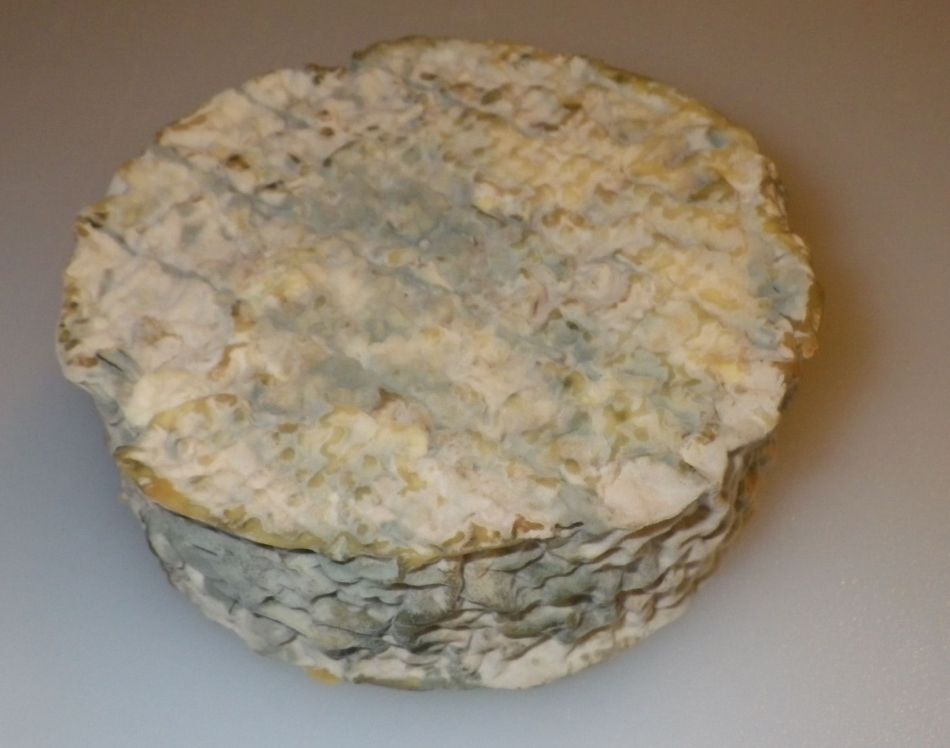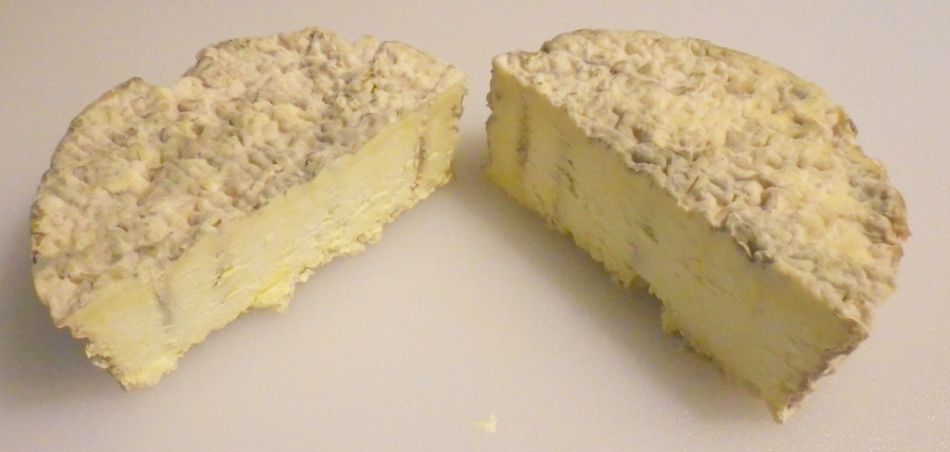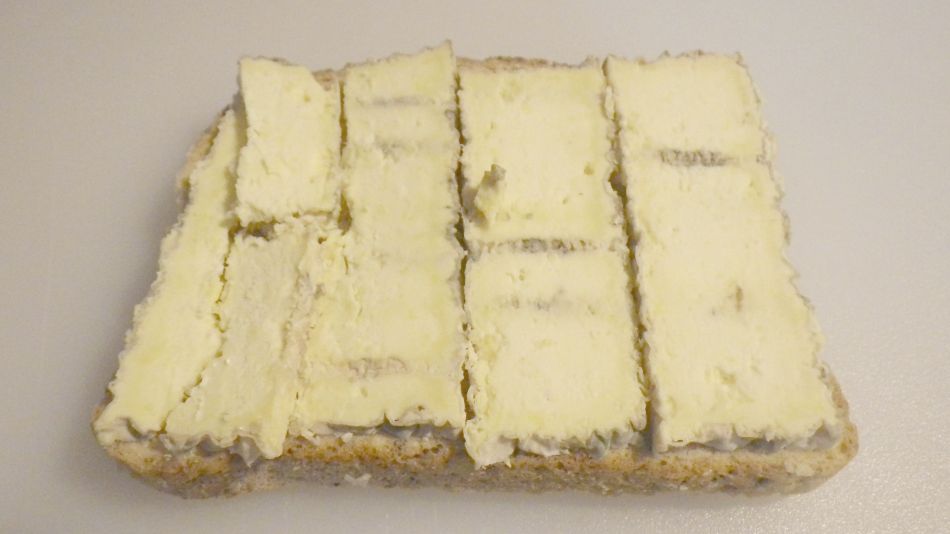
The photos show the cheese two weeks after the start, already ready to eat.
This is very similar to Stilton and is in the cheese family that includes Danish Blue, Roquefort and Dolcelatte. It
started very mild at 14 days old with nice blue veins. I ate a wheel a week. The last wheel was quite ripe and stronger
than any shop-bought Stilton I've ever had. This is on my list to make again!
INGREDIENTS
4 l Channel Islands Milk (5%) - about a gallon - or add pure pouring cream to increase standard milk to 5% fat.
1.25 g CaCl2 in 50 g cooled boiled water(omit for raw milk)
4 Mesophilic Mother Ice Cubes (Lactococcus lactis subsp. cremoris and Lactococcus lactis subsp. lactis)
15 g Shavings of blue cheese rind (Penicillium roqueforti)
1 g Rennet in 50 g cooled boiled water
17 g Salt (iodine free)
MILK CULTURE AND RENNET
Heat the milk to 30°C
Add the mesophillic culture (e.g. 1 sachet Mad Millie or culture ice cubes saved from an earlier batch.)
Cultured buttermilk can be used instead of mesophilic. Flora danica should be OK too.
Liquidise the shavings of blue cheese rind (Penicillium roqueforti) in a little milk.
Sieve out any lumps and add the blue milk to the main batch.
Blue cheese rind is less predictable than freeze dried Penicillium roqueforti. Use whichever you prefer.
Ripen for 45 minutes to one hour.
Re-heat the milk back to 30° C
Add the rennet and stir for no more than a minute, then still the milk.
Wait for 60 minutes or until there's a clean break.
CUT AND DRAIN THE CURDS
Cut the curds into 1cm cubes.
Wait 10 minutes. Don't stir.
Strain the curds through a cheese cloth.
Wait for the whey flow to slow down till the dripping almost stops.
This might take several hours. The curd ball will shrink a lot.
Keep the whey for use in other recipes.
My curds were quite yellow due to the high fat and beta carotene in grass fed Jersey milk.
There were yellow blobs of separated fat. These merged back into the curds during drying.
SALT AND FORM
Mill the salt into the curds.
Spoon the curds into three or four round moulds sitting on a mat.
For around a day, at room temperature, 20°C, in a fly-proof covered box ...
Allow more whey to drain off.
From time to time, invert the moulds.
I used Teflon mats and kitchen towels to wick away moisture and speed up drying.
The cheeses will shrink and become self supporting.
At this stage, remove the cheeses from the moulds.
RIPEN THE WHEELS
Ripen the wheels at cave temperature, 12°C.
Blue mould should show after a week or two.
Invert the wheels daily or whenever you think of it.
If necessary, use more sheets of kitchen towel to wick away moisture.
The goal is an almost dry rind with the cheese still moist.
When blue mould begins to form, pierce the wheels to encourage mould in the body of the cheeses.
I stored the wheels in vented plastic kitchen boxes and mopped out condensation daily.
CAVE MATURATION
Ripen the wheels in a humid box at 12°C for at least one more week.
Stand the wheels on a mat or stainless trivet to allow whey or condensation to drain.
Invert the wheels and drain any whey or condensation daily. Wipe the box dry.
Reduce the inverting and draining as the moisture build-up slows down.
Eat once a good mould has formed throughout the body of the cheeses.
My first wheel got eaten two weeks after the first step. It had the typical blue cheese taste.
The flavour became stronger over the next week or two.
MOULDS / FORMS
I re-purposed four one-litre PET milk bottles. These had the right diameter.
I cut off the top and bottom leaving four tallish open ended cylinders.
These served as forms while the wheels dried and hardened.

